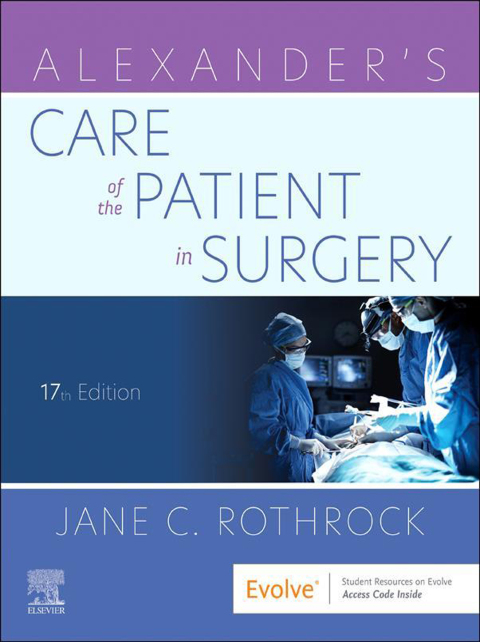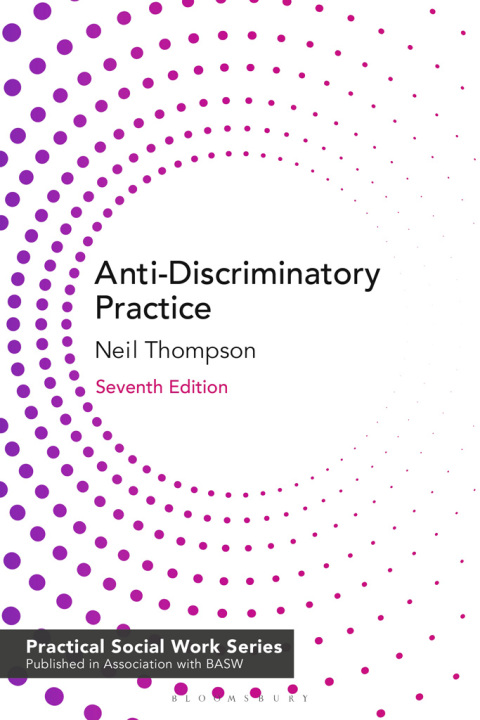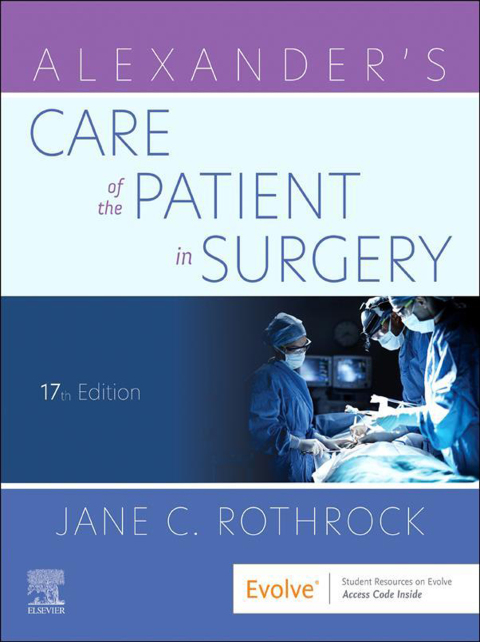Description
Efnisyfirlit
- Cover image
- Title page
- Table of Contents
- Evolve Student Resources
- Copyright
- Contributors
- Clinical Consultants
- Reviewers
- About the Author
- Preface
- Unit I: Foundations for Practice
- Chapter 1. Concepts Basic to Perioperative Nursing
- Overview of Perioperative Nursing Practice
- Standards of Perioperative Nursing Practice
- Evidence-Based Practice
- Performance Improvement
- Perioperative Nursing Roles
- Key Points
- Critical Thinking Question
- References
- Chapter 2. Patient Safety and Risk Management
- Evolution of Perioperative Patient Safety
- Major Professional Association and Government Regulatory Safety Activities
- Nonprovider Members of the Perioperative Patient Safety Team
- Perioperative Nursing Safety Issues
- Risk Management
- Key Points
- Critical Thinking Question
- References
- Chapter 3. Workplace Issues and Staff Safety
- Safe Patient Handling and Movement
- Slips, Trips, and Falls
- Sharps Safety and Bloodborne Pathogens
- Transmission-Based Precautions
- Responding to Exposure
- Environment of Care Safety
- Medication Safety
- Radiation Safety
- Surgical Smoke Safety
- Fatigue and Burnout
- Workplace Violence
- Incivility/Bullying
- Key Points
- Critical Thinking Question
- References
- Chapter 4. Infection Prevention and Control
- Causes of Infection
- Infection Prevention in the Perioperative Setting
- Aseptic Practices to Prevent Infection
- Key Points
- Critical Thinking Question
- References
- Chapter 5. Anesthesia
- Anesthesia Providers
- Patient Safety
- Awareness During Anesthesia
- Distractions in the OR
- Preoperative Preparation
- Types of Anesthesia Care
- Perioperative Monitoring
- Anesthesia Machines and Anesthetic Gases
- General Anesthesia
- Regional Anesthesia
- Monitored Anesthesia Care
- Moderate Sedation/Analgesia
- Local Anesthesia
- Pain Management
- Fluid Management
- Temperature Control
- Malignant Hyperthermia
- Perioperative Nursing Considerations
- Key Points
- References
- Chapter 6. Positioning the Patient for Surgery
- Anatomic and Physiologic Considerations
- Perioperative Nursing Considerations
- Operating Room Beds and Accessories
- Standard Surgical Positions
- Key Points
- Critical Thinking Question
- References
- Chapter 7. Sutures, Sharps, and Instruments
- Suture
- Sharps
- Instruments
- Perioperative Nursing Considerations
- Key Points
- Critical Thinking Question
- References
- Chapter 8. Surgical Modalities
- Minimally Invasive Surgery Overview
- Video Technology
- Practices and Potential Risks During Minimally Invasive Surgery
- Energies Used During Surgery
- Key Points
- Critical Thinking Question
- References
- Chapter 9. Wound Healing, Dressings, and Drains
- Anatomy
- Etiology of Wounds
- Types of Wound Closure
- Phases of Wound Healing
- Factors Affecting Wound Healing
- Wound Classification
- Antimicrobial Prophylaxis
- Patient, Family, and Caregiver Education and Discharge Planning
- Wound Management
- Dressings
- Drains
- Key Points
- Critical Thinking Question
- References
- Chapter 10. Postoperative Patient Care and Pain Management
- Perianesthesia Considerations
- Perianesthesia Complications
- Discharge from the Postanesthesia Care Unit
- Admission to the Ambulatory Surgery Phase II Unit
- Admission to the Surgical Unit
- Postoperative Nursing Considerations
- Patient, Family, and Caregiver Education and Discharge Planning
- Key Points
- Critical Thinking Question
- References
- Unit II: Surgical Interventions
- Chapter 11. Gastrointestinal Surgery
- Surgical Anatomy
- Perioperative Nursing Considerations
- Surgical Interventions
- Minimally Invasive Surgery: Laparoscopy
- Abdominal Access: Closed Technique
- Abdominal Access: Cutdown or Hasson Technique
- Abdominal Access: Direct Visual Entry
- Single-Incision Laparoscopic Surgery
- Robotic-Assisted Laparoscopy
- Natural Orifice Transluminal Endoscopic Surgery
- Gastrointestinal Endoscopy
- Surgery of the Esophagus
- Surgery of the Stomach
- Bariatric Surgery
- Surgery of the Small Bowel
- Surgery of the Colon
- Surgery of the Rectum
- Key Points
- Critical Thinking Question
- References
- Chapter 12. Surgery of the Biliary Tract, Pancreas, Liver, and Spleen
- Surgical Anatomy
- Perioperative Nursing Considerations
- Surgical Interventions
- Surgery of the Pancreas
- Surgery of the Liver
- Surgery of the Spleen
- Key Points
- Critical Thinking Question
- References
- Chapter 13. Hernia Repair
- Surgical Anatomy
- Femoral Hernias
- Obturator Hernias
- Ventral Hernias
- Umbilical Hernias
- Epigastric Hernias
- Spigelian Hernias
- Perioperative Nursing Considerations
- Surgical Interventions
- Surgery for Repair of Hernias of the Anterior Abdominal Wall
- Key Points
- Critical Thinking Questions
- References
- Chapter 14. Gynecologic and Obstetric Surgery
- Surgical Anatomy
- Pelvic Cavity
- Bony Pelvis
- Pelvic Floor
- Perioperative Nursing Considerations
- Lasers in Gynecologic Surgery
- Surgical Interventions
- Gynecologic Surgery Using Vaginal Approach
- Gynecologic Surgery Using Minimally Invasive Techniques
- Gynecologic Surgery Using the Abdominal Approach
- Surgery for Conditions Affecting Fertility
- Obstetric Surgery
- Abdominal Surgery During Pregnancy
- Key Points
- Critical Thinking Question
- References
- Chapter 15. Genitourinary Surgery
- Surgical Anatomy
- Perioperative Nursing Considerations
- Surgical Interventions
- Surgery of the Penis and the Urethra
- Surgery of the Scrotum and Testicles
- Surgery of the Prostate Gland
- Surgery of the Bladder
- Surgery of the Ureters and Kidneys
- Key Points
- Critical Thinking Question
- References
- Chapter 16. Thyroid and Parathyroid Surgery
- Surgical Anatomy
- Parathyroid Gland
- Perioperative Nursing Considerations
- Surgical Interventions
- Thyroidectomy
- Substernal or Intrathoracic Thyroidectomy
- Minimally Invasive Thyroidectomy
- Thyroglossal Duct Cystectomy
- Parathyroidectomy
- Key Points
- Critical Thinking Question
- References
- Chapter 17. Breast Surgery
- Surgical Anatomy
- Benign Lesions of the Breast
- Breast Cancer in Men
- Breast Cancer in Women
- Screening Technologies
- Diagnostic Techniques
- Surgical Treatment Considerations
- Perioperative Nursing Considerations
- Surgical Interventions
- Incision and Drainage for Abscess
- Breast-Conserving Surgery
- Lymph Node Biopsy
- Axillary Lymph Node Dissection
- Subcutaneous Mastectomy
- Simple Mastectomy
- Modified Radical Mastectomy
- Key Points
- Critical Thinking Question
- References
- Chapter 18. Ophthalmic Surgery
- Surgical Anatomy
- Structures of the Eye
- Refractive Apparatus
- Refractive Errors
- Perioperative Nursing Considerations
- Surgical Interventions
- Surgery of the Retina
- Surgery for Patients With Glaucoma
- Surgery of the Conjunctiva
- Surgery of the Cornea
- Surgery of the Lacrimal Gland and Apparatus
- Surgery of the Eyelids
- Surgery of the Globe and Orbit
- Key Points
- Critical Thinking Question
- References
- Chapter 19. Otorhinolaryngologic Surgery
- Surgical Anatomy
- Nasal Anatomy
- Throat Anatomy
- Proximal Structures
- Diagnostic Studies
- Imaging
- Perioperative Nursing Considerations
- Surgical Interventions
- Rhinologic (Nasal) Procedures
- Oral Cavity/Pharyngeal/Laryngeal/Neck Procedures
- Key Points
- Critical Thinking Question
- References
- Chapter 20. Orthopedic Surgery
- Surgical Anatomy
- Vertebrae
- Shoulder and Upper Extremity
- Wrist and Hand
- Pelvis, Hip, and Femur
- Knee, Tibia, and Fibula
- Ankle and Foot
- Perioperative Nursing Considerations
- Surgical Interventions
- Electrical Stimulation
- Fractures and Dislocations
- Surgery of the Shoulder
- Surgery of the Humerus, Radius, and Ulna
- Surgery of the Hand
- Surgery of the Hip and Lower Extremity
- Surgery of the Lower Leg (Distal Femur, Tibia, and Fibula)
- Surgery of the Ankle and Foot
- Pelvic Fractures and Disruption
- Total Joint Arthroplasty
- Arthroscopy
- Surgery of the Spine
- Key Points
- Critical Thinking Question
- References
- Chapter 21. Neurosurgery
- Surgical Anatomy
- Brain and Adjacent Structures
- Spine, Spinal Cord, and Adjacent Structures
- Perioperative Nursing Considerations
- Surgical Interventions
- Surgical Approaches to the Brain
- Surgery of the Brain and Cranium
- Surgery of the Spine
- Key Points
- Critical Thinking Question
- References
- Chapter 22. Reconstructive and Aesthetic Plastic Surgery
- Surgical Anatomy
- Perioperative Nursing Considerations
- Surgical Interventions
- Reconstructive Plastic Surgery
- Aesthetic Surgery
- Key Points
- Critical Thinking Questions
- References
- Chapter 23. Thoracic Surgery
- Surgical Anatomy
- Perioperative Nursing Considerations
- Surgical Interventions
- Endoscopy (Diagnostic or Therapeutic)
- Lung Surgery
- Key Points
- Critical Thinking Question
- References
- Chapter 24. Vascular Surgery
- Surgical Anatomy
- Arterial Disease
- Venous Disease
- Perioperative Nursing Considerations
- Surgical Interventions
- Venous Surgical Interventions
- Key Points
- Critical Thinking Question
- References
- Unit III: Special Considerations
- Chapter 25. Cardiac Surgery
- Surgical Anatomy
- Perioperative Nursing Considerations
- Surgical Interventions
- Extracorporeal Circulation Procedures
- Pericardiectomy
- Surgery for Coronary Artery Disease
- Surgery for Heart Failure
- Surgery for the Mitral Valve
- Surgery for the Tricuspid Valve
- Surgery for the Pulmonary Valve
- Surgery for the Aortic Valve
- Surgery for the Thoracic Aorta
- Assisted Mechanical Circulation
- Heart and Heart-Lung Transplantation
- Surgery for Conduction Disturbances
- Key Points
- Critical Thinking Question
- References
- Chapter 26. Pediatric Surgery
- Pediatric Surgical Anatomy
- Cardiovascular Status
- Temperature Regulation
- Metabolism
- Fluid Management
- Psychologic Development
- Children With Autism Spectrum Disorder
- Lesbian, Gay, Bisexual, Transgender, and Queer Youth
- Perioperative Nursing Considerations
- Surgical Interventions
- Vascular Access
- Minimally Invasive Surgery
- Fetal Surgery
- Metabolic and Bariatric Surgery in Adolescents
- General Surgery: Gastrointestinal Procedures
- General Surgery: Hernias
- General Surgery: Abdominal Procedures
- General Surgery: Resection of Tumors
- Genitourinary Surgery
- Otorhinolaryngologic Procedures
- Neurosurgical Procedures
- Orthopedic Procedures
- Plastic and Reconstructive Surgery
- Pediatric Ophthalmic Surgery
- Trauma
- Surgery for Congenital Heart Disease
- Key Points
- Critical Thinking Question
- References
- Chapter 27. Geriatric Surgery
- Perioperative Nursing Considerations
- Common Surgical Interventions in Geriatric Patients
- Thyroid Surgery
- Abdominal Surgery
- Hernia Surgery
- Genitourinary Surgery
- Ophthalmic Surgery
- Orthopedic Surgery
- Vascular and Cardiovascular Surgery
- Additional Considerations
- Key Points
- Critical Thinking Question
- References
- Chapter 28. Trauma Surgery
- Perioperative Nursing Considerations
- References
- Chapter 29. Integrative Health Practices
- Integrative Health Practice Categories
- Integrative Health Practice Therapies
- Integrative Health Practices for Enhanced Recovery After Surgery
- Integrative Health Practices and Perioperative Patient Care
- Key Points
- Critical Thinking Question
- References
- Appendix A. Laboratory Values
- Illustration Credits
- Chapter 1
- Chapter 2
- Chapter 3
- Chapter 4
- Chapter 5
- Chapter 6
- Chapter 7
- Chapter 8
- Chapter 9
- Chapter 10
- Chapter 11
- Chapter 12
- Chapter 13
- Chapter 14
- Chapter 15
- Chapter 16
- Chapter 17
- Chapter 18
- Chapter 19
- Chapter 20
- Chapter 21
- Chapter 22
- Chapter 23
- Chapter 24
- Chapter 25
- Chapter 26
- Chapter 27
- Chapter 28
- Chapter 29
- Index
- Special Features
- Ambulatory Surgery Considerations
- Enhanced Recovery After Surgery
- Evidence for Practice
- Patient Engagement Exemplar
- Patient, Family, and Caregiver Education
- Patient Safety
- Research Highlight
- Robotic-Assisted Surgery
- Surgical Pharmacology






